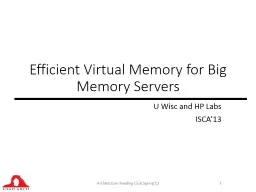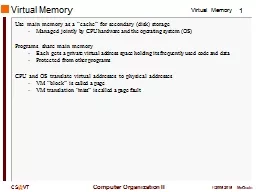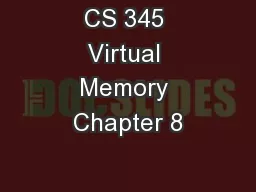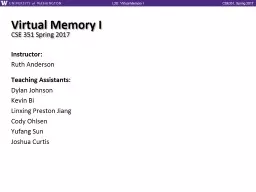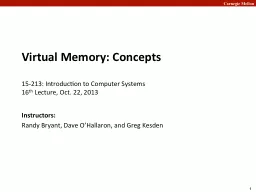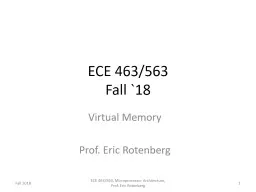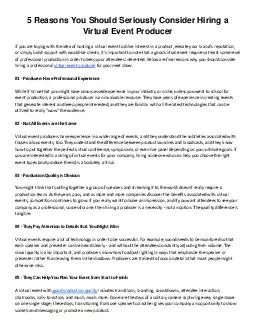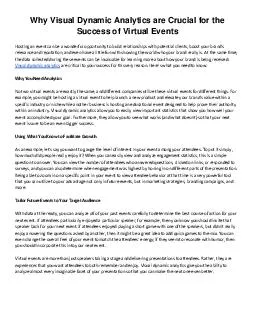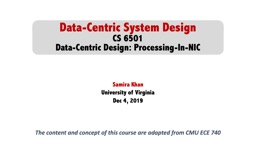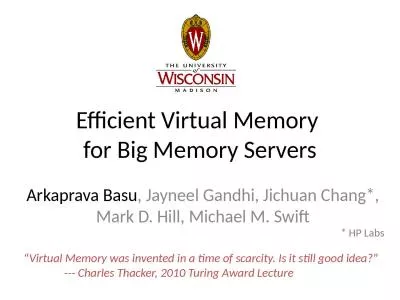PPT-Efficient Virtual Memory for Big Memory Servers
Author : pasty-toler | Published Date : 2016-06-12
U Wisc and HP Labs ISCA13 Architecture Reading Club Summer13 1 Key points Big memory workloads Memcached databases graph analysis Analysis shows TLB misses can
Presentation Embed Code
Download Presentation
Download Presentation The PPT/PDF document "Efficient Virtual Memory for Big Memory ..." is the property of its rightful owner. Permission is granted to download and print the materials on this website for personal, non-commercial use only, and to display it on your personal computer provided you do not modify the materials and that you retain all copyright notices contained in the materials. By downloading content from our website, you accept the terms of this agreement.
Efficient Virtual Memory for Big Memory Servers: Transcript
Download Rules Of Document
"Efficient Virtual Memory for Big Memory Servers"The content belongs to its owner. You may download and print it for personal use, without modification, and keep all copyright notices. By downloading, you agree to these terms.
Related Documents

